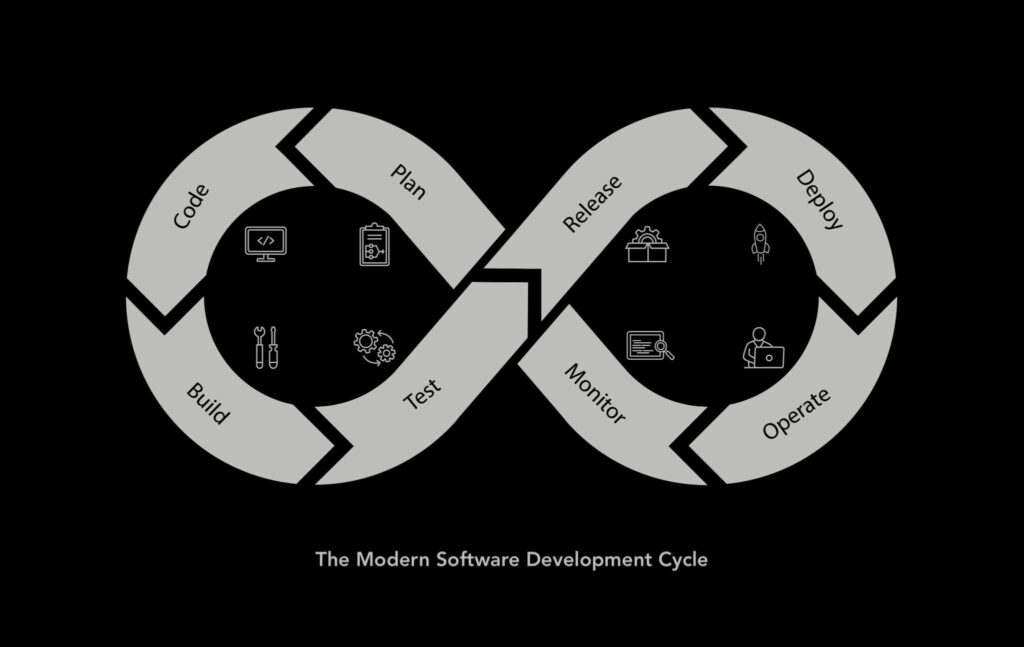Over the course of the last few years, as businesses and organizations adopted a more agile approached development, prioritizing rapid prototyping and faster time-to-market, the benefits of a no-code approach have become abundantly clear. It’s no secret that the No-Code Revolution is here.
Thanks to technological advancements, what was once a niche-use functionality has evolved into a tool capable of revolutionizing software development and IT operations. The exploding growth in demand for no-code solutions shows no signs of slowing in the coming years, especially as companies face digital skill gaps and a shortage of experienced developers.
What is no-code development?
In a technical sense, no-code development refers to using graphical user interfaces and visual, drag-and-drop tools to create software applications without needing to write any code. It’s commonly referred to as visual scripting, and various industries take advantage of the technology, from logistics to healthcare to video game development. This approach allows individuals with no background in programming to create a wide range of applications, from simple data-driven websites and integrations to complex workflow automation systems.
The central philosophy of the no-code movement is that technology should facilitate innovation and the sharing of ideas, rather than act as a barrier to entry. By sidestepping the need to learn programming languages, the development process becomes democratized.
With no-code development, anyone can create and customize tools and applications without needing specialized programming skills or a formal education. This can help to level the playing field and make it easier for people from a wide range of backgrounds and industries to participate in the development process, and by making it easier for people to build their own tools and applications, no-code development can ultimately lead to the creation of more useful and effective technologies.
The No-Code Revolution is changing the way businesses operate
At its core, the value proposition of the no-code movement is that it is leaner, faster, less resource-intensive, and more accessible than traditional development cycles, so it’s no surprise that businesses that understand the potential utility of this approach are embracing it with open arms. Let’s take a closer look at some of the key ways that business owners leverage this technology:
Faster time-to-market
No-code development has become particularly popular among businesses that make use of the Agile methodology of project management, thanks to the ability to rapidly experiment, iterate, and pivot when necessary.
Being able to quickly put together simple apps and websites can drastically reduce time spent in the prototyping phase, and allowing content and marketing teams to create custom landing pages and conduct A/B testing without the assistance of an engineer is a massive boon for small teams with tight budgets.
Lower costs
Speaking of tight budgets, cost savings are another factor driving the increased interest in no-code development. Testing, troubleshooting, and deploying a product can be an expensive proposition, and that’s before factoring in the overhead costs associated with consultants and large development teams — especially if they require training.
The no-code approach is ideal for projects that require leveraging every available resource. But it’s not just small businesses getting in on the action — major financial institutions, software-as-a-service vendors, and even retail giants like Walmart are investing heavily in no-code platforms too.
Closing the skill gap
The supply of experienced software developers has dwindled in recent years, and that trend is unlikely to change. In fact, it’s likely that this issue will escalate as more and more businesses grasp the need for a digital transformation strategy.
But one of the most exciting aspects of the no-code movement is the ability for virtually anyone within an organization to contribute to development and problem-solving without relying on scarce IT resources, leaving senior programmers to focus on more specialized work.
There may be some growing pains associated with this shift in organizational alignment, but the benefits far outweigh the challenges. Business owners can nurture existing talent thanks to upskilling programs, allowing them to close skill gaps and quickly onboard new hires while also mitigating the impact of unexpected illnesses, resignations, and other obstacles that might traditionally bring a project to a screeching halt.
Improved productivity
The automation of repetitive tasks and basic customer interactions has become a key way to accelerate development times, streamline workflows, reduce backlogs, and spur on progress, and no-code tools are poised to play a central role in this process. By eliminating time-consuming tasks from a senior developer’s workflow, it frees them to better use their talents on more complicated workflows. Especially as businesses invest in restructuring around a more online-centric future, there will be an increasing reliance on automation to facilitate scalability and agility both during and after that transition.

How does the No-Code Revolution impact the role of DevOps?
The trend toward low-code and no-code development has many professional developers wondering what the future holds — will their jobs go the way of the dinosaurs as everyone with an internet connection becomes capable of creating apps from scratch?
While it’s impossible to predict exactly how no-code innovations will play out in detail, it’s likely that rather than making DevOps roles obsolete, these tools will actually be beneficial as the landscape shifts from more programming-focused to placing more emphasis on supervision and governance.
Rather than working as mere code monkeys, DevOps professionals can expect to play a more strategic role in their organizations, with more opportunities to channel their specialized expertise into more complex growth concepts such as quantum computing and machine learning.
From speeding up the process of integrating fresh hires into DevOps teams to reducing time spent administering toolsets, adopting no-code solutions can help teams streamline their practices and methodologies, improve automation coverage, and mitigate the dual threat of understaffing and a projected developer shortage of 85.2 million by the year 2030.
Predicting the future of the no-code landscape
There’s no doubt that no-code tools are here to stay. As GitHub CEO Chris Wansrath so succinctly put it, “the future of coding is no coding at all.”
Alex Nichols, the vice president of Alphabet’s independent growth fund, goes into more detail about the ongoing impact of the No-Code Revolution:
No-code is empowering business users to take over functionality previously owned by technical users by abstracting complexity and centering around a visual workflow. This profound generational shift has the power to touch every software market and every user across the enterprise.
The data seems to back up their assessments: According to forecasts by Gartner, Inc., 80% of technology products and services will be created by people outside of the IT field by 2024. Based on current trends, Gartner also predicts that within that same time frame, 65% of all applications will utilize some form of either low-code or no-code technology.
With more pressure on businesses to scale up automation and improve delivery speed and time to value, there is a rapidly increasing drive across numerous industries to adopt low-code and no-code solutions for faster innovation and a more efficient use of resources. In other words, the No-Code Revolution continues to spread.
And as digital transformation strategies continue to lead to organizations expanding in scale and complexity, the ability of a no-code approach to automate tasks and tools, streamline training pipelines, foster innovation, and speed up time-to-market will give businesses that recognize the potential of this technology a clear competitive edge.
Disclaimer: The views and opinions expressed above are those of the contributor and do not necessarily represent or reflect the official beliefs or positions of Sofy.







